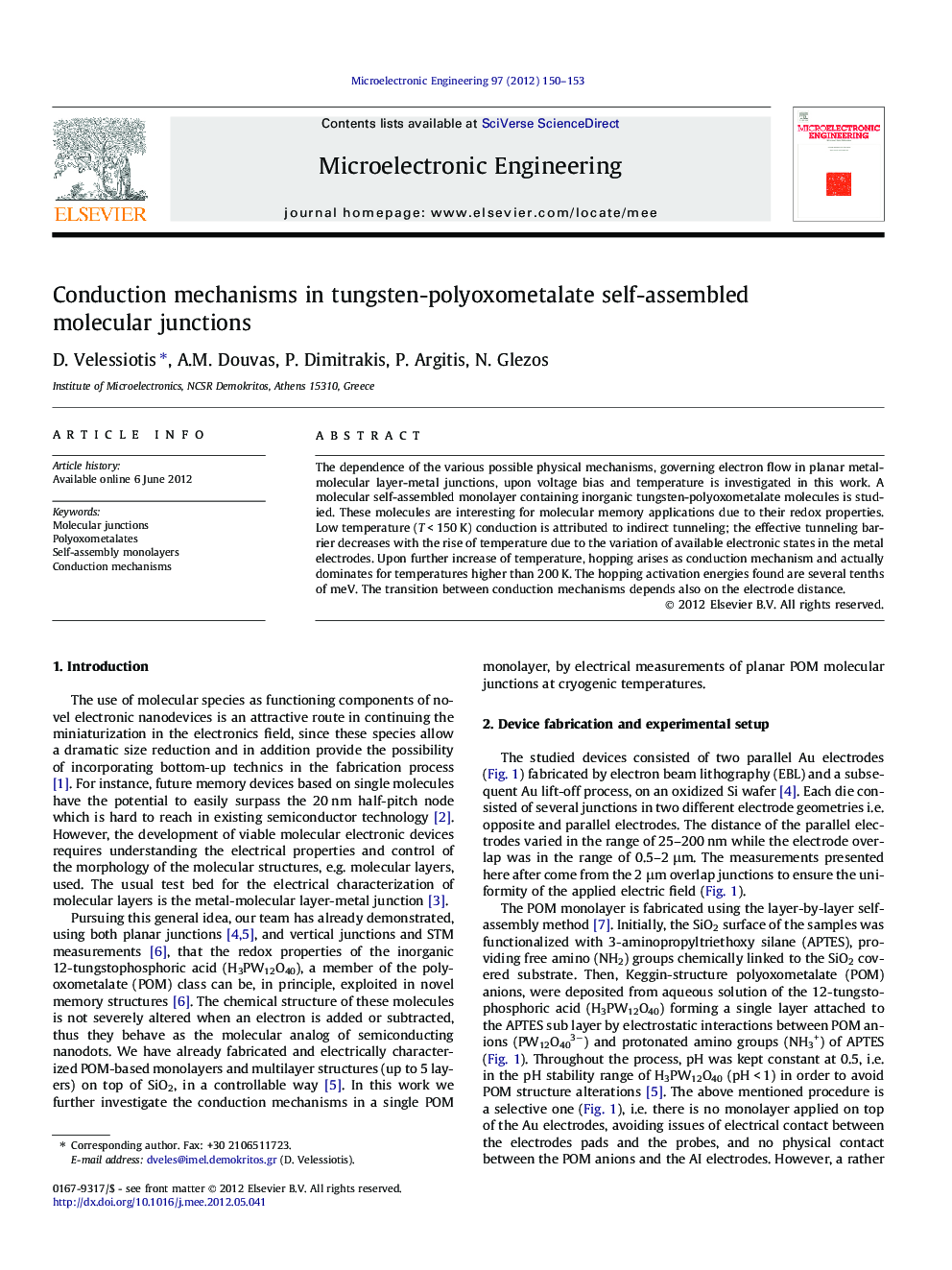| Article ID | Journal | Published Year | Pages | File Type |
|---|---|---|---|---|
| 544357 | Microelectronic Engineering | 2012 | 4 Pages |
The dependence of the various possible physical mechanisms, governing electron flow in planar metal- molecular layer-metal junctions, upon voltage bias and temperature is investigated in this work. A molecular self-assembled monolayer containing inorganic tungsten-polyoxometalate molecules is studied. These molecules are interesting for molecular memory applications due to their redox properties. Low temperature (T < 150 K) conduction is attributed to indirect tunneling; the effective tunneling barrier decreases with the rise of temperature due to the variation of available electronic states in the metal electrodes. Upon further increase of temperature, hopping arises as conduction mechanism and actually dominates for temperatures higher than 200 K. The hopping activation energies found are several tenths of meV. The transition between conduction mechanisms depends also on the electrode distance.
Graphical abstractFigure optionsDownload full-size imageDownload as PowerPoint slideHighlights► Electrical measurements of Keggin structure polyoxometalate SAM in low temperatures. ► Hopping for high temperatures (T > 200 K). ► Indirect tunneling for low temperatures (T < 150 K). ► Tunneling barrier decreases with temperature rise. ► Barrier decrease due to temperature dependence of available electrodes states.
